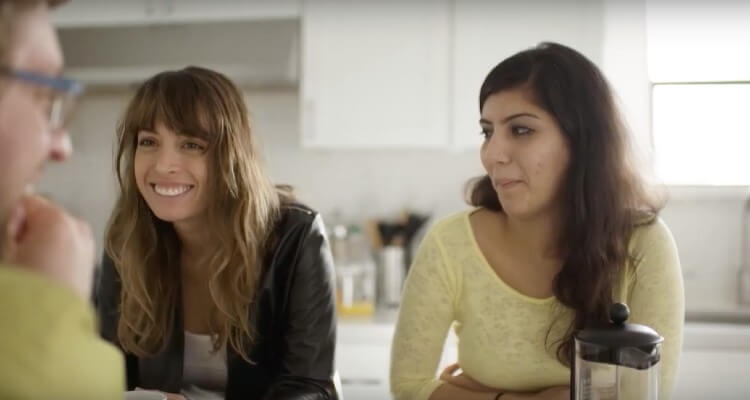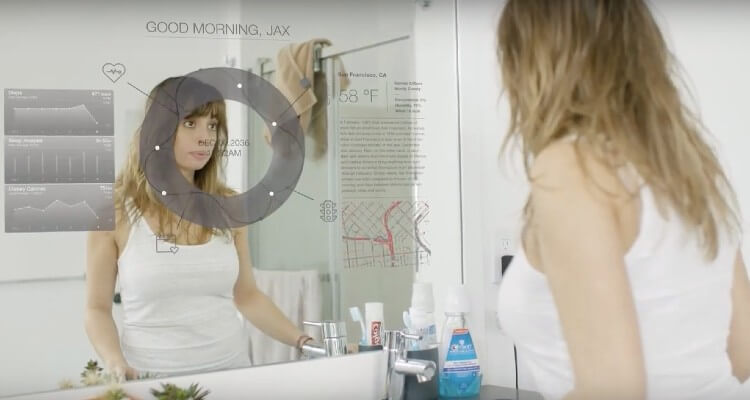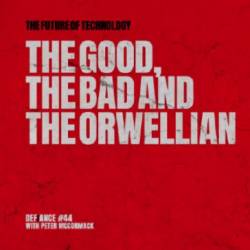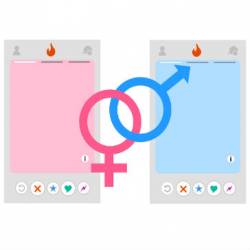What Marriage in the United States May Look Like in 2036
As romance and sex undergo incredible change, are alternative relationships going to become commonplace?

To quote the Greek philosopher Heraclitus: “Change is the only constant in life.”
This maxim seems to be holding truer than ever. What had previously been stalwart constants in our day-to-day lives now seem to be upended on almost a daily basis.
Ongoing tech advances have played a major role, of course in altering the job landscape and how we connect, or don’t connect, with people. The current global health crisis is a drastic and hopefully shortlived disruption, which will envitably cause ripples down the line.
But while societal changes are often stressful, they can also be wonderfully liberating, revealing and even encouraging new ways of living. And, even better, new ways to love.
A team of four graduate students, under the guidance of Dr. Jake Dunagan at California College of the Arts have put together a short film called The Future of Marriage.
A depiction that might surprise and even shock some but, for others, might give hope for a future packed full of all kinds of exciting new relationship options.
A serious examination of possibilities
To create their video speculation of the future of marriage in the year 2036, the team used four Foresight Methodologies: a handy and common tool for students and practitioners of Futures Studies used to breakdown and postulate potential outcomes.
From these four Methodologies, they then created 16 potential forms marriage might take in the coming years. These were then whittled downfurther into what would eventually become the script for their film.
Admittedly, this a very simplified breakdown of their process. For those interested, the Journal of Futures Studies has a much more detailed breakdown of how the team came to its conclusions.
A non-monogamous tomorrow

In the end, the future the team has envisioned is one that is equal parts familiar and almost-distressingly alien.
Living in 2036 San Francisco, our main character, Jax, is in a complex polyamorous family in what she describes as a “network of five family units” that includes living with two partners, Shane and Myra, but also has long-distance relationships with other partners.
This is actually far from being futuristic, as these kinds of sexual and emotional relationship structures exist today, with the film at this point becoming almost an excellent selling point for that kind of arrangement.
Almost, though, as the video, which is directed by Riley Moynes, takes a few turns towards what could be described as the negative: the first being Jax’s mention of their child, who is being raised outside of the home by other members of their extended grouping.
The second is distinctly jarring, the almost-distressingly alien mention from above, where Jax desires a child with “Asian features” and enters into a relationship with another character who subsequently alters their physiology to “produce immature sperm cells” and so leading to their pregnancy.
To be clear, it’s not the character undergoing this change that was personally upsetting but rather that a key motivation for the relationship and the birth of a child was that it was based primarily on aesthetics.
It’s almost like the film says that, for all of these apparent advances in marriage and relationships, here is a future that’s also superficial. It’s like they needed to add in something distinctly negative just to create some kind of tension.
A final criticism, and it’s a big one, is that the future depicted here is predominantly and worst of all unrealistically white, young, ableist, and affluent.
Agreed, that being totally inclusive might not be possible in a short film but their depiction still totally ignores even the most conservative estimates as to where the United States is heading when it comes to growing population demographics. Additionally, by showing everyone well-off and comfortable the short also sends the unfortunate message that this most-happy future is only for the privileged.
What’s missing from their future

Trying not to take away from what the California College of the Arts has accomplished, there are many growing elements of contemporary society that absolutely must be included when pondering the future of marriage and relationships.
To begin with, the very concept of marriage will no doubt completely change: going from how relationships are defined to merely being an option, with little or no legal or social implications for deciding not to have one.
It might eventually even become simply a joyous statement: a way for those involved to publically celebrate their romantic involvement with each other without it becoming a socially or legally binding agreement.
As in the film, polyamory will become more and more common with family units of every shape, size being up to those involved to create.
With further advances in telecommunications and, naturally, sex tech and teledildonics, these new family units will be able to share living spaces or be separated by thousands of miles—while still being physically and emotionally intimate.
As gender, sex, and orientation being on a self-determined spectrum gains greater acceptance—aided to some extent by technological and medical advances—marriages and relationships too will gain more and more fluidity in form and duration.
Dynamics and familiar roles within these new relationships would also become equally flexible with members in them being able to shift and change themselves as well as where they fit within their families until they find where they feel the most comfortable.
This expansion of social possibilities could even extend to the artificial, with artificially intelligences inhabiting physical bodies, such as with sex dolls and robotic companions or as freeform digital entities becoming valued members of marriages, family units, or as legal companions.
Best of all, these new marriage styles and emotional/sexual relationship forms could be available for anyone, everywhere, who wants to take part in them.
No matter your gender, sexuality, ethnicity, education, religion, income, where you live, or any other factor, you’ll be able to create your own family–and, through them, find your own happiness.
Loving the future

No one can really say what will happen tomorrow, let alone in the next few decades, but one thing is absolutely certain: that change, even if it sometimes comes on a disturbingly large scale, is inevitable.
While change is unavoidable, even to old institutions like marriage, it’s also worth remembering that while the future could be filled with all kinds of exciting new relationship possibilities it means you’ll also have the choice not to use them.
No matter what happens in the coming years we’ll, nine times out of ten, we’ll have the ability to decide what if it’s going to be a bright, hopeful future or one that is, shall we say, is decidedly less so.
It’s up to us: so let’s work together to make a world where everyone can have the freedom to assemble their own unique relationship dynamics and familial structures or even, if it’s what we prefer, to get married in a more traditional sense.
Image sources: DMBA CCA, Pexels, Free-Photos
Leave a reply
You must be logged in to post a comment.

















